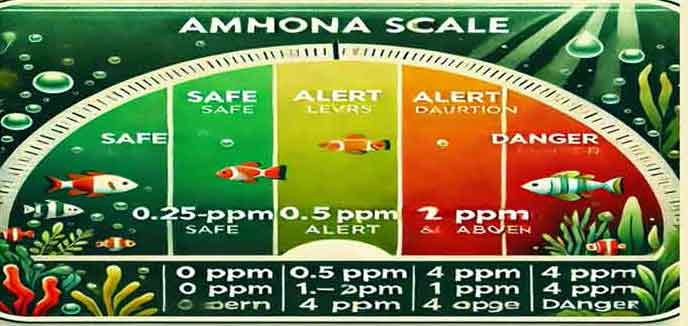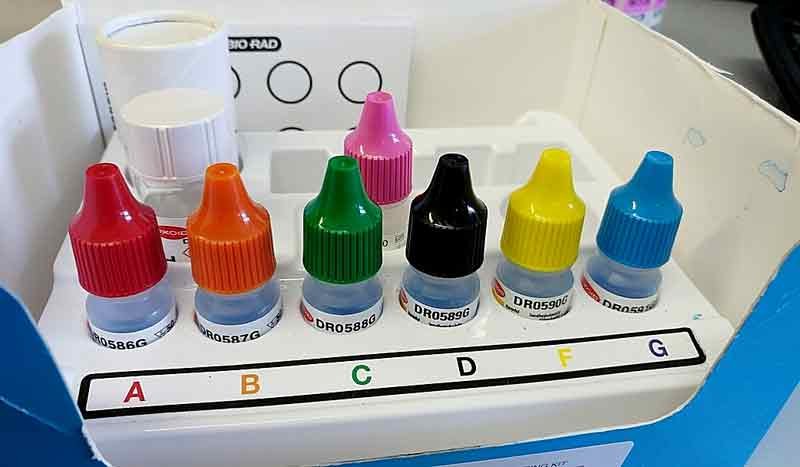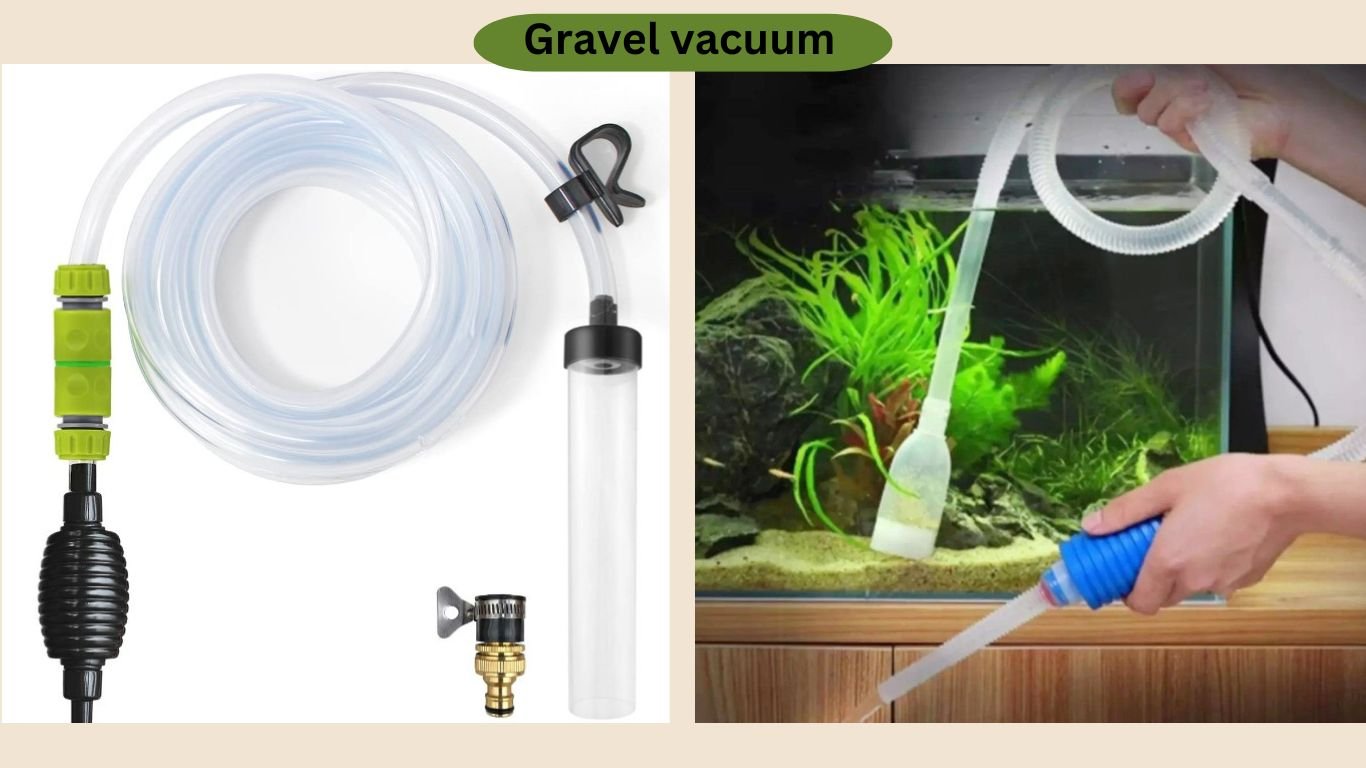The best water for aquariums is taken from my real experience.
Choosing the best water for your aquarium is crucial. It ensures the health and happiness of your fish.
Aquarium enthusiasts often face the challenge of selecting the right water. The water quality directly impacts the well-being of your aquatic pets. Fish need specific conditions to thrive. The right water maintains these conditions. It helps prevent diseases and promotes natural behavior.
In this guide, we will explore the best water options for your aquarium. We will discuss what makes each type suitable. Your fish deserve the best environment. Let’s dive into the details and find the perfect water for your aquarium.
Types Of Aquarium Water
When it comes to keeping your aquarium in top shape, maintaining the right water parameters is essential. These parameters include pH levels, water hardness, temperature, and the presence of ammonia and nitrates. Understanding and managing these factors can be the difference between a thriving aquatic environment and a struggling one. Let’s dive into the specifics.
pH Levels

The pH level of your aquarium water is crucial. It measures how acidic or alkaline the water is. Fish species have different pH preferences; some like it neutral, while others thrive in slightly acidic or alkaline water.
For instance, many tropical fish prefer a pH of around 7.0, which is neutral. However, African cichlids need a higher pH, often around 8.0. Adjusting the pH can be done using natural methods like adding driftwood or commercial products designed for this purpose.
Hardness
Water hardness refers to the amount of dissolved minerals, like calcium and magnesium, in the water. It is often measured in degrees of general hardness (dGH).
Soft water has a low mineral content, while hard water has a high mineral content. For example, many South American fish, like tetras and angelfish, thrive in soft water. On the other hand, many livebearers, like guppies and mollies, prefer harder water.
Temperature
Temperature plays a significant role in the health of your aquarium. Fish are cold-blooded animals, so their body temperature matches their environment.
Most tropical fish thrive in water temperatures between 75°F and 80°F. Coldwater fish, like goldfish, prefer cooler temperatures, typically between 65°F and 70°F. Maintaining the correct temperature can be achieved using an aquarium heater or chiller.
Ammonia And Nitrites

ammonia scale
Ammonia and nitrites are toxic to fish and must be kept at zero levels. They are byproducts of fish waste and uneaten food decomposing in the water.
High levels of these chemicals can lead to “new tank syndrome,” where fish become stressed and can die. Regular water changes and using biological filtration help manage these toxins. Test your water weekly to ensure ammonia and nitrite levels remain at zero.
Have you ever noticed your fish acting strangely or falling ill? It might be a sign that one of these water parameters is off. Regular testing and adjustments are key to a healthy, vibrant aquarium. What steps will you take to ensure your fish are living in an optimal environment?
Water Parameters
If you’re an aquarium enthusiast, you know that maintaining the right water quality is crucial for the health of your fish and plants. One of the best ways to ensure your aquarium water stays at optimal levels is by using water testing kits. These kits help you monitor various parameters like pH, ammonia, nitrite, and nitrate levels, making it easier to keep your aquatic friends happy and healthy.
Types Of Kits
There are several types of water testing kits available, each suited for different needs. You’ll find strip tests, liquid tests, and digital testers.
Strip tests are quick and straightforward. You dip a strip into the water and compare the colors to a chart.
Liquid tests offer more accuracy. You add reagents to a water sample and match the resulting color to a chart.
Digital testers are the most precise. They give you a digital readout of your water parameters, but they can be more expensive.
How To Use
Using water testing kits is generally simple, but it varies depending on the type of kit. For strip tests, dip the strip in water and wait for a few seconds before comparing the colors.
With liquid tests, take a water sample in a test tube, add a few drops of reagent, and shake it gently. Wait for the color to develop.
Digital testers usually require calibration first. Once calibrated, you can dip the probe in the water, and you’ll get a digital readout.
Interpreting Results
Interpreting the results can be the tricky part. Each parameter has an ideal range you should aim for.
If your pH is off, it can stress your fish. An ideal range for most freshwater aquariums is 6.5-7.5.
High ammonia levels can be fatal. Aim for 0 ppm.
Similarly, nitrite levels should also be 0 ppm. For nitrates, keep it below 20 ppm.
Have you ever had a fish die unexpectedly? It could be due to poor water quality. Regular testing can prevent such unfortunate events.
Are you using water testing kits for your aquarium? What challenges have you faced? Share your experiences and tips in the comments below!
Water Testing Kits

Ensuring the best water for your aquarium involves using reliable water testing kits. These kits help monitor water quality, keeping fish healthy. Regular testing detects harmful substances early, ensuring a safe environment for aquatic life.
Water conditioners play a crucial role in maintaining a healthy aquarium environment. They help make tap water safe for your fish by eliminating harmful chemicals and toxins. Let’s dive into some essential types of water conditioners that every aquarium enthusiast should know about.
Dechlorinators
Dechlorinators are vital for neutralizing chlorine and chloramine in tap water. Without them, these chemicals can be deadly for your fish. For instance, when I set up my first aquarium, I noticed my fish were stressed and gasping for air. Adding a dechlorinator instantly resolved the issue. It’s a quick and easy solution that ensures your fish have a safe habitat.
Ammonia Neutralizers
Ammonia is a common problem in aquariums, especially during the initial setup phase. High ammonia levels can poison your fish. Using ammonia neutralizers can prevent this. They convert ammonia into a non-toxic form, protecting your fish from harm. Have you ever seen your fish acting lethargic or showing signs of ammonia burns? An ammonia neutralizer can be your lifesaver.
Beneficial Bacteria
Beneficial bacteria are the unsung heroes of your aquarium. They help break down waste and keep the water clean. Adding these bacteria can jump-start the nitrogen cycle in your tank. It’s like giving your aquarium a head start in maintaining a healthy environment.
Think about it—would you rather deal with constant water changes or let beneficial bacteria do the work for you? Water conditioners are indispensable for any aquarium setup. They ensure your fish live in a safe and healthy environment. What’s your go-to water conditioner? Let’s discuss this in the comments!
Water Conditioners
When setting up an aquarium, understanding the different filtration methods is crucial to maintaining a healthy environment for your fish. Each type of filtration plays a unique role in keeping the water clean and safe. Let’s dive into the main types of filtration: Mechanical, Biological, and Chemical.
Mechanical Filtration
Mechanical filtration is the first line of defense in your aquarium. It removes visible debris like fish waste, uneaten food, and plant matter. Think of it as a net that catches particles floating in the water.
Common tools for mechanical filtration include sponge filters, filter floss, and filter pads. These tools trap debris, preventing it from decomposing and polluting the water. Regular cleaning of these filters is essential to keep them effective.
Have you ever noticed cloudy water after feeding your fish? Mechanical filtration can help clear it up quickly, making your aquarium look pristine.
Biological Filtration
Biological filtration is a natural process that uses beneficial bacteria to break down harmful substances. These bacteria convert ammonia, produced by fish waste, into less harmful nitrates. This process is essential for maintaining a safe environment for your fish.
Live rock, bio-wheels, and ceramic rings are popular choices for biological filtration. These materials provide surfaces for bacteria to thrive. Adding these to your filtration system promotes a balanced ecosystem.
Have you ever had fish get sick unexpectedly? Effective biological filtration can reduce these occurrences by keeping harmful substances in check.
Chemical Filtration
Chemical filtration targets invisible toxins and impurities in the water. Activated carbon is a common chemical filter that absorbs harmful substances like chlorine and heavy metals.
Other chemical media include resins and zeolites, which can remove specific contaminants. Using chemical filtration can improve water quality and clarity, making it safer for your fish.
Ever struggled with persistent odors or discoloration in your tank? Chemical filtration can be your secret weapon to tackle these issues.
Each filtration method plays a vital role in maintaining a healthy aquarium. Combining mechanical, biological, and chemical filtration ensures your fish have the best environment to thrive in. What filtration methods have you found most effective in your aquarium?
Filtration Methods
Proper filtration methods ensure the best water for your aquarium. Clean water helps keep fish healthy and vibrant. Select a reliable filter to remove impurities and maintain a balanced environment.
Water changes are a crucial aspect of maintaining a healthy aquarium. Regular water changes ensure that your fish live in a clean environment, reducing the buildup of toxins and maintaining water quality. Let’s dive into the key factors you need to consider for effective water changes.
Frequency
How often should you change the water in your aquarium? It depends on several factors like the size of your tank, the number of fish, and the type of fish you have. A good rule of thumb is to change 10-20% of the water every week. This helps in keeping the water parameters stable without stressing your fish. If you have a heavily stocked tank, you might need to change water more frequently. Observing your fish and water clarity can give you additional cues.
Proper Techniques
Getting the technique right is essential for effective water changes. Start by turning off any electrical equipment like heaters and filters. Use a siphon to remove the old water from the tank. Be careful not to disturb the substrate too much, as this can release harmful toxins. When adding new water, make sure it’s the same temperature as the tank water to avoid shocking your fish. Use a water conditioner to remove chlorine and other chemicals.
Tools Needed
Having the right tools can make water changes easier and more efficient. Here’s a quick checklist: – Siphon or gravel vacuum: Helps in removing water and debris from the tank. – Buckets: Designate specific buckets for aquarium use to avoid contamination. – Water conditioner: Neutralizes chlorine and chloramine in tap water. –
Thermometer: Ensures the new water matches the tank’s temperature. – Algae scraper: Useful for cleaning the tank walls during water changes. These tools are relatively inexpensive and can be found at most pet stores. Are you ready to improve the water quality in your aquarium? Follow these tips and keep a close eye on your fish. Your aquatic friends will thank you!
Water Changes

Keeping your aquarium free from algae can be a tricky task. Algae not only look unsightly but can also harm your fish and plants. With the right strategies, you can keep algae under control and maintain a beautiful, healthy aquarium.
Prevention Tips
Algae thrive on light and nutrients. To prevent algae, start by controlling the amount of light your aquarium receives. Ensure your tank is not placed in direct sunlight. Use a timer to limit the light exposure to around 8-10 hours a day.
Next, avoid overfeeding your fish. Excess food can decompose and release nutrients that algae love. Feed your fish only what they can consume in a few minutes.
Regular water changes are essential. Changing about 10-15% of the water weekly helps remove excess nutrients. This keeps the water clean and reduces the risk of algae growth.
Treatment Options
If algae have already taken hold, don’t worry. Start by manually removing as much algae as possible. Use an algae scraper or sponge to clean the tank walls.
Consider using an algaecide. These chemicals can kill algae but use them cautiously. Follow the instructions and do not overuse them, as they can harm your fish and plants.
An effective method is to introduce live plants. Plants compete with algae for nutrients, thus reducing algae growth naturally. Java moss and anubias are great options.
Algae-eating Fish
Some fish are natural algae eaters. Adding them to your tank can help control algae. Siamese algae eaters, for instance, are diligent cleaners.
Another popular choice is the Otocinclus catfish. These small fish are excellent at eating soft algae and are peaceful tank mates.
Lastly, consider adding snails. Nerite snails are particularly effective at cleaning algae from glass and decorations without harming your plants.
By implementing these strategies, you can keep algae at bay and enjoy a clear, vibrant aquarium. What methods have you found effective in controlling algae in your tank?
Algae Control
Maintaining an aquarium is essential for keeping fish healthy. The right water is important, but regular maintenance ensures a thriving environment. This includes cleaning, checking equipment, and monitoring fish health.
Cleaning Schedule
A consistent cleaning schedule is vital. Clean the tank every two weeks. Remove debris and uneaten food. This prevents water pollution and keeps fish healthy. Clean the glass to remove algae. Use a gravel vacuum to clean the substrate.
Equipment Checks
Regular equipment checks prevent malfunctions. Inspect filters, heaters, and lights weekly. Ensure the filter is not clogged. Check heater temperature settings. Verify lights are working correctly. Replace broken or worn-out equipment promptly.
Health Monitoring
Monitor fish health closely. Observe fish behavior daily. Look for signs of stress or illness. Check for discoloration or unusual spots. Keep an eye on swimming patterns. Early detection of issues ensures timely treatment.
Frequently Asked Questions
What Is The Best Water To Use For A Fish Tank?
Use dechlorinated tap water for a fish tank. Ensure proper pH, hardness, and temperature levels. Avoid distilled or softened water.
Is Purified Water Or Distilled Water Better For Fish Tanks?
Purified water is better for fish tanks. Distilled water lacks essential minerals and can harm fish. Always test and condition water before use.
Is Tap Water Or Filtered Water Better For Fish Tanks?
Filtered water is better for fish tanks. It removes harmful chemicals, chlorine, and heavy metals. Tap water can contain contaminants harmful to fish. Use a good water conditioner if using tap water. Always ensure the water parameters suit your fish species.
How Do You Prepare to Tap Water For A Fish Tank?
Dechlorinate the tap water using a water conditioner. Ensure the temperature matches the fish tank. Test pH levels and adjust if necessary.
Choosing the best water for your aquarium is essential. Healthy fish need clean, balanced water. Test your water regularly to ensure quality. Use the right treatments for your water type. Tap water, filtered water, or distilled water can be used correctly.
Each type has its pros and cons. Research and preparation make a big difference. Happy, healthy fish thrive in the right water. Your effort will be worth it. Keep learning and enjoy your aquarium journey.






